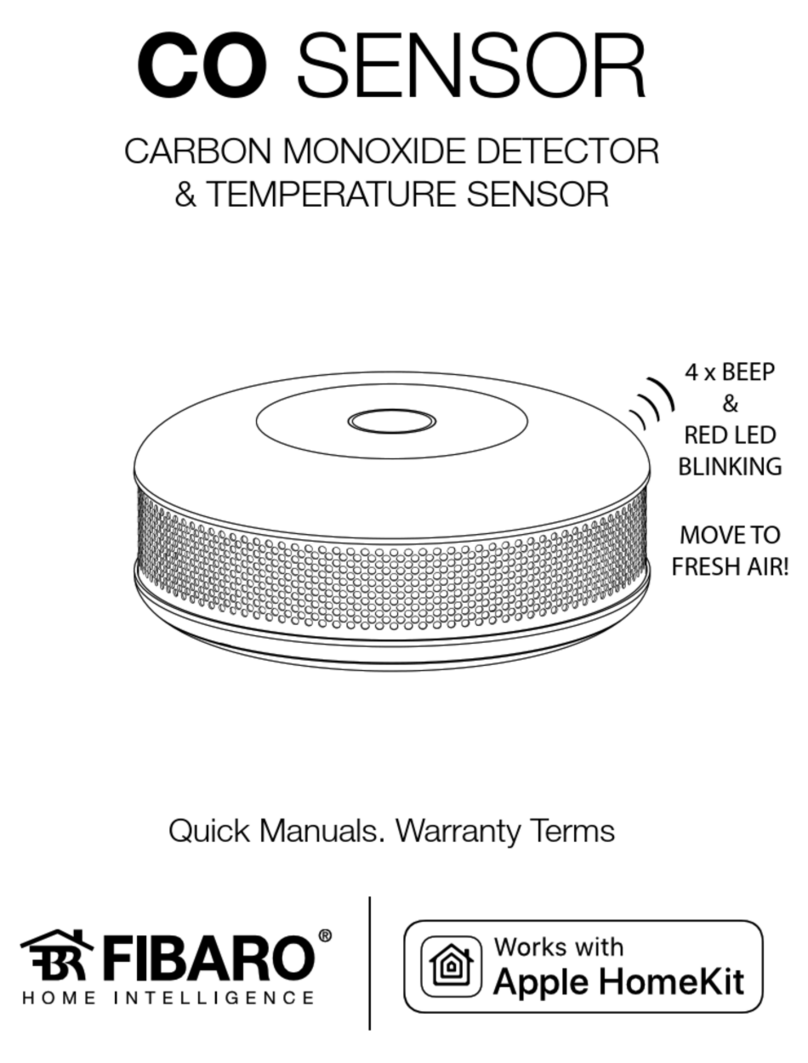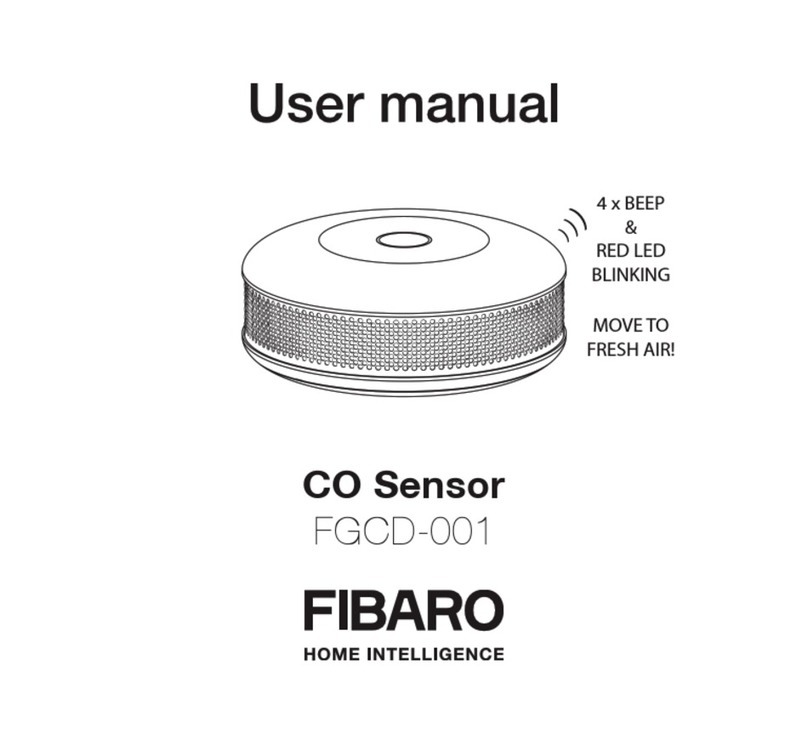
12
ASSOCIATIONS
#8: Associations
The device provides the association of six groups:
1st association group – “Lifeline” reports the device status and
allows for assigning single device only (main controller by default).
2nd association group – “CO Alarm” is assigned to the device
status - devices in this group will be switched on/o when CO Alarm
status changes.
3rd association group – “CO Alarm” is assigned to the device sta-
tus - devices in this group will receive notication when CO Alarm
status changes. Useful for devices that can trigger alarms.
4th association group – “CO Level” is assigned to measured CO
level - devices in this group will be switched on/o after exceeding
the level of CO concentration specied in parameter 14.
5th association group –“Tamper Alarm” is assigned to the tamper -
sends tamper alarm and cancellation frames to the associated devices.
6th association group – “CO Alarm BC” is assigned to the device
status - devices in this group will receive sensor alarm frames when
CO Alarm status changes. Provides backward compatibility with con-
trollers not supporting Z-Wave Plus protocol.
7th association group – “Tamper Alarm BC” is assigned to the
tamper - sends tamper alarm and alarm cancellation frames to the
associated devices. Provides backward compatibility with controllers
not supporting Z-Wave Plus protocol.
Association (linking devices) - direct control of other devices with-
in the Z-Wave system network e.g. Dimmer, Relay Switch, Roller Shut-
ter or scene (may be controlled only through a Z-Wave controller).
To add an association (using the Home Center controller):
1. Go to Settings
2. Go to Devices.
3. Select the appropriate device from the list.
4. Select the Associations tab.
5. Dene to which group and which devices to associate.
6. Save the changes.
7. Press the button to wake up the device or wait until the auto-awa-
ken time has elapsed.
The CO Sensor in 2nd to 7th group allows to control 5 regular or multi-
channel devices per an association group.
“Lifeline” group is reserved solely for the controller and hence only 1
node can be assigned.
It is not recommended to associate more than 10 devices in general,
as the response time to control commands depends on the number of
associated devices. In extreme cases, system response may be de-
layed.
NOTE
Association ensures
direct transfer of
control commands
between devices, is
performed without
participation of the
main controller and
requires associated
device to be in the
direct range.
i
NOTE
2nd and 4th associa-
tion groups use BASIC
CC, but the device
does not repond to
GET commands.
i




























